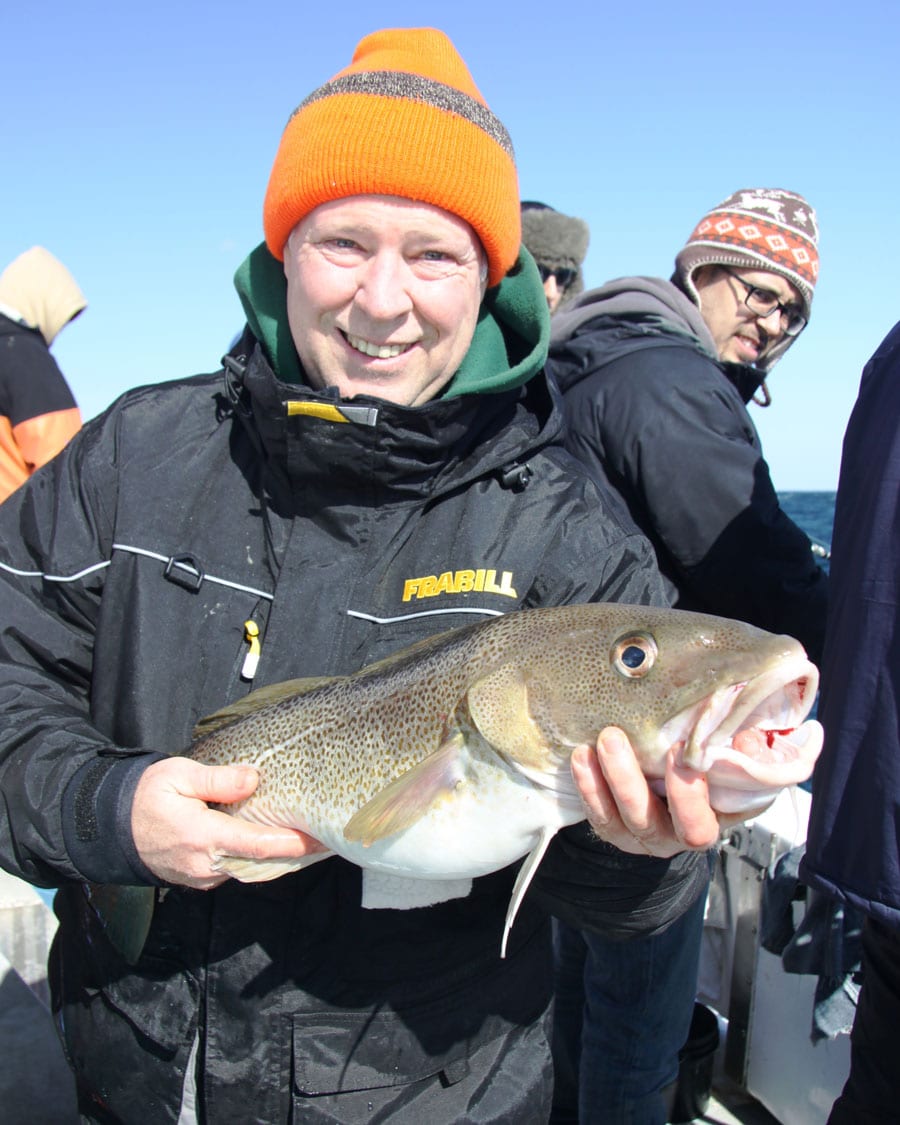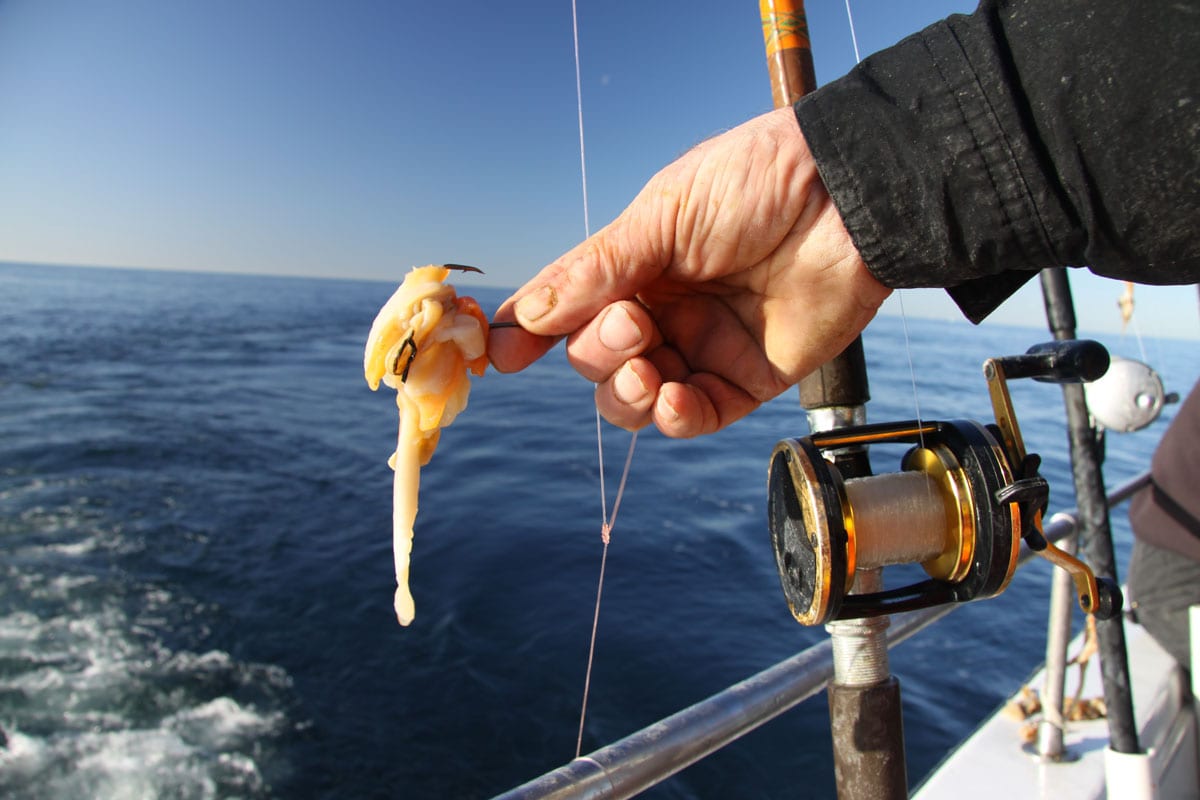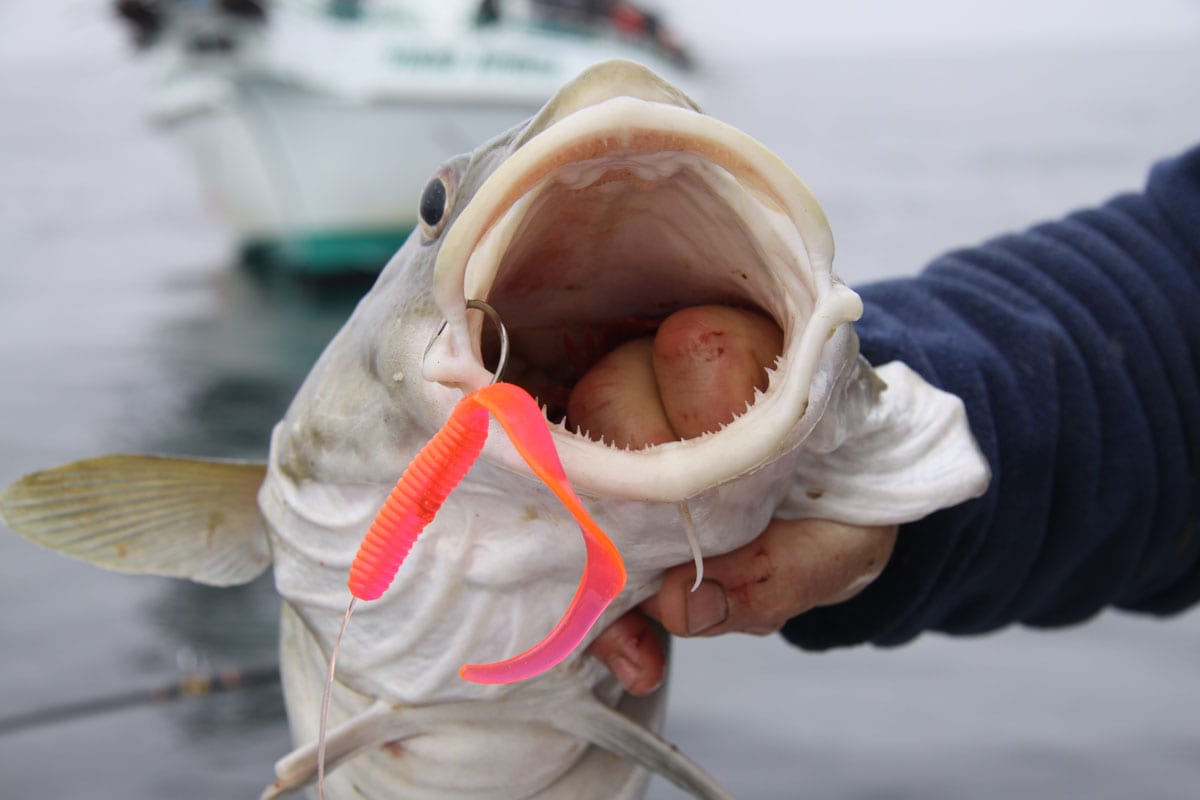By Tom Schlichter

Codfish are the headliners in February, or at least most Long Island, Connecticut and Rhode Island anglers hope so. This December saw a decent bite of baccala beginning to develop but the New Year, with its windy weather and air temperatures varying from zero degrees to over 50 degrees within a span of several days, got off to a bit of rough start.
To be sure, most years the codding has settled into a predictable pattern by the time February rolls around. It’s at this point, too, that most of the codfish action shifts to Long Island’s East End and the waters around Block Island. From a codfish’s point of view, the primary draw to these eastern fishing hot spots is the plentiful bait available. Plenty of herring should be in the area by St. Valentine’s Day, plus there are always crabs, lobsters, clams, bergalls and a variety of small baitfish to keep predatory and opportunistic bottom feeders in an agreeable mood. The fishing can be wild when the cod are tight on the herring, allowing those who prefer to shun clam baits for silver diamond jigs to experience what may be the best codfishing of the year.

Many anglers well-schooled in the art of diamond jigging for bluefish are surprised to find that codfishing with jigs requires much more finesse. Think of it as deep-water jigging for striped bass – slower, more deliberate than bluefishing – and you’ll be on the right track. Expect most cod, especially the larger ones, to hold tight to the bottom so keep your focus there. Drop down, crank up ten turns, free-spool back to the bottom and repeat the procedure. Don’t over-think this game; simply slow it down. Begin the day with a moderate speed of retrieve and experiment from there by slowing the retrieve to a crawl or speeding up a bit. Once you begin to have consistent success, lock the retrieve rate in your mind so it is easy to repeat.
Diamond jigging for cod can produce a ton of hook-ups when the fish are in an aggressive mood. Many anglers, however, drop a lot of fish on the ride to the surface. Generally, this is a result of pumping the rod – lifting it up and dropping it down repeatedly while fighting a fish. This motion allows the jig to momentarily fall on a slack line. As the jig drops repeatedly each time the rod is lowered, its own weight eventually pulls the hook free from the codfish’s jaw. The remedy for this is simple: set the hook hard one time and then simply keep steady pressure on the fish as you reel it to the surface. Keep the rod held slightly less than parallel to the water without lifting, pumping or dropping the tip to gain line. Keep the acronym “CSP” (Constant, Steady Pressure) in mind if you start losing hooked fish and your tally should increase significantly.

Most codfish fans like to add a surgical tube or curly-tailed soft plastic teaser 18 to 24 inches above the diamond jig. A Fat Cow Jigging Strip or Otter Tail are other suitable teaser options. The key to making cod teasers a big plus in your arsenal is choosing the right color. Start by asking the mate which color has been working best and use that as a starting point. If nearby anglers are having superior success, take note and update your rig. Figure red, orange, chartreuse and white as the primary producers – in that order – unless instructed otherwise. Many anglers also tip their teasers with pieces of clam. If you want to sweeten the pot, choose a strip of the stringy strip that rims a clam; a ribbon of three or four inches will flow nicely off the back of the teaser without significantly dulling the action that mimics baitfish and turns cod on in the first place.
Of course, even at the height of the run there will be times when the cod simply want to eat meat. In that instance, set up a high-low rig with an eight- to 12-ounce bank sinker. If tying your own rigs, add a small chartreuse, red or pearl bead ahead of each hook. While cod will sometimes chase jigs well up into the water column, they prefer clam baits presented tight to the ocean floor. Work hard to keep your bait down in the strike zone as much as possible. When seas are choppy or a heave is on the water, this will mean dropping the rod tip as the boat rolls up a wave, and lifting up to keep the line tight enough to detect a bite as you settle into the trough.
As with tipping a teaser, baits are best kept small while bottom fishing for the winter king. Rather than load up, select a piece of clam that sports a dark brown section of hard neck though which you can pass the hook, and drape a ribbon of the rim over the top to flutter enticingly in the current. While jig fishermen should set-up instantly upon feeling a strike, bait fishermen will do better to hesitate, allowing the rod to load slightly before setting the hook. Wait until extra heaviness is readily detectable at the end of the line and then strike with a smooth, steady and solid lifting motion.
If you haven’t been codfishing in a few years, or if you are new to this game, don’t underestimate the coldness factor. February can be a bitter month on the codfish grounds, even when temperatures are in the 30- to 40-degree range on shore. Choose your days wisely and dress for maximum warmth. At the very least, bring along a knit hat, waterproof gloves, thermals, a hooded sweatshirt, boots, foul weather gear and a warm coat. A couple of hand warmer packets are also a good idea. Bring enough to last all day – some only stay hot for a couple of hours.
By Tom Schlichter









